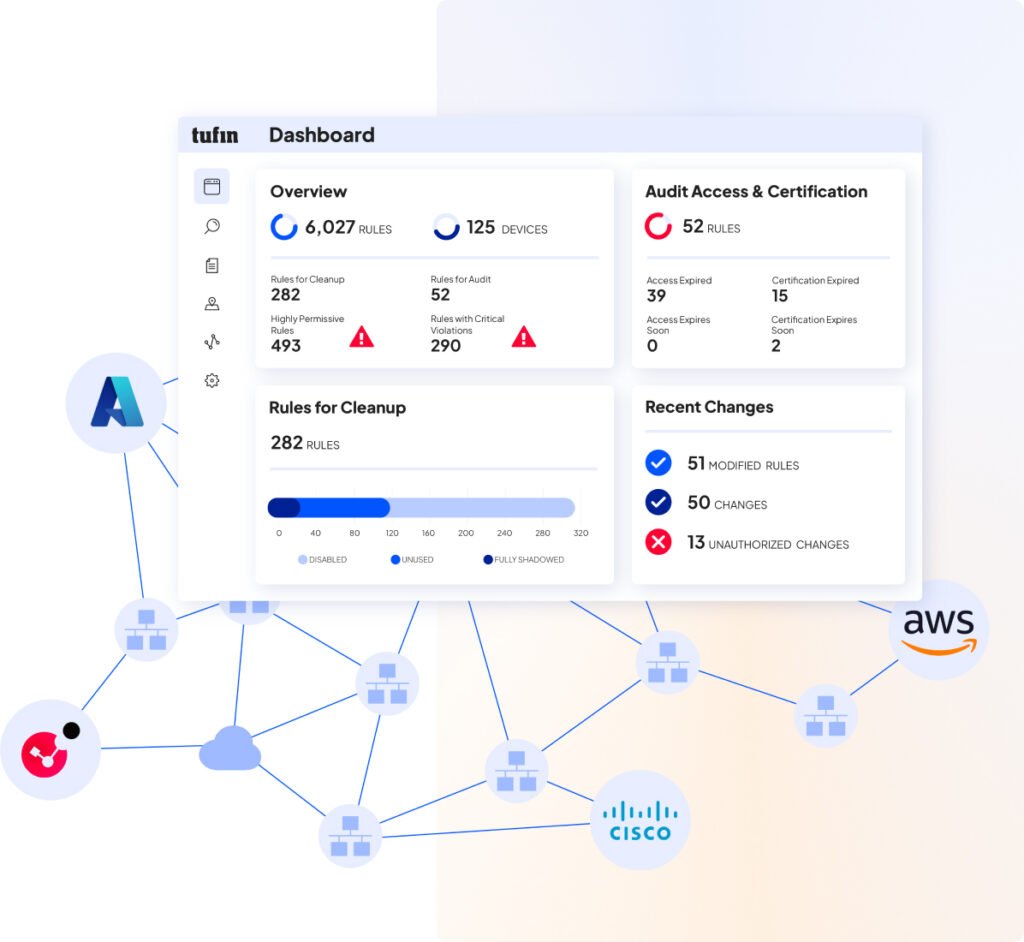
Tufin the security policy company
Tufin abstracts security policy management into a single management platform, enabling customers the flexiblity to deploy their network infrastructure on premises, at the edge and in the cloud , all with a common set of security policy management controls.
Tufin, the essential platform for simplifying the protection, compliance and management of your complex network and cloud infrastructure.
Tufin began its journey to simplify complexity and deliver a more secure and compliant infrastructure on which your business operates. Our customers deploy, operate, and secure an increasingly complex and agile infrastructure to support the needs of your employees, customers, and suppliers. Our multivendor hybrid mesh firewall architecture is enhanced by a robust technology partner ecosystem. Together with our ecosystem partners, we seek to understand and solve your business problems, expand the number of devices we support and offer you unparalleled scale across your multivendor hybrid cloud infrastructure. What do you expect from Tufin and our cyber security mesh ecosystem? You expect that we will help you reduce the risk of breach and non-compliance, increase agility and reduce cost – and, that is what we deliver.
Firewalls and Networks
Unified security policy management across your next generation firewalls (NGFW), switches, routers, load balancers and web proxies.
Secure Access Service Edge (SASE)
Expand unified security policy management to the Edge through Tufin’s integrations with leading SASE vendors.
Cloud
Incorporate cloud native security controls into your unified security policy management capability with Tufin integrations with these leading cloud vendors.
Microsegmentation
Enhance your unified security policy management capability through Tufin’s integrations with these leading microsegmentation solutions.
Other Ecosystem Partners
Tufin’s technology ecosystem enables customers to leverage third-party sources for improved policy and risk decisions. By integrating with various security, cloud, and network platforms, Tufin enhances external processes with network insights, policy automation, and continuous compliance.
Tufin integrates with a range of security platforms, including Security Orchestration (SOAR), Security Information & Event Management (SIEM), and Vulnerability Management solutions. These integrations allow security teams to improve triage, escalation, and containment of security incidents while enriching alerts with critical network context.
Tufin provides visibility and automation for cloud-native networks, SASE, SD-WAN, and Software Defined Networking (SDN) environments. By mapping hybrid network policies and ensuring continuous compliance, Tufin helps enterprises maintain secure and efficient cloud and on-premises connectivity.
Tufin integrates with Governance, Risk & Compliance (GRC) solutions, IT Service Management (ITSM) platforms, and IP Address Management (IPAM) tools. These integrations provide a holistic view of network risk, streamline change requests, and improve network topology mapping across hybrid environments.
Questions?
We’re ready to help you!













